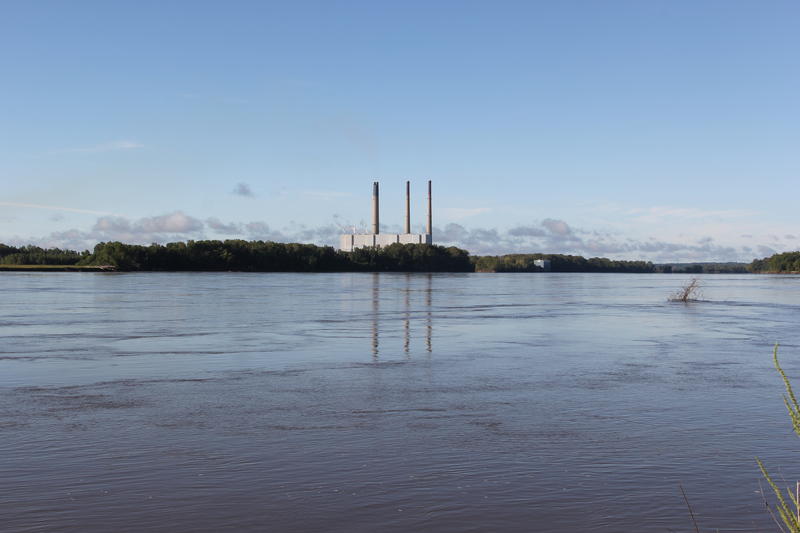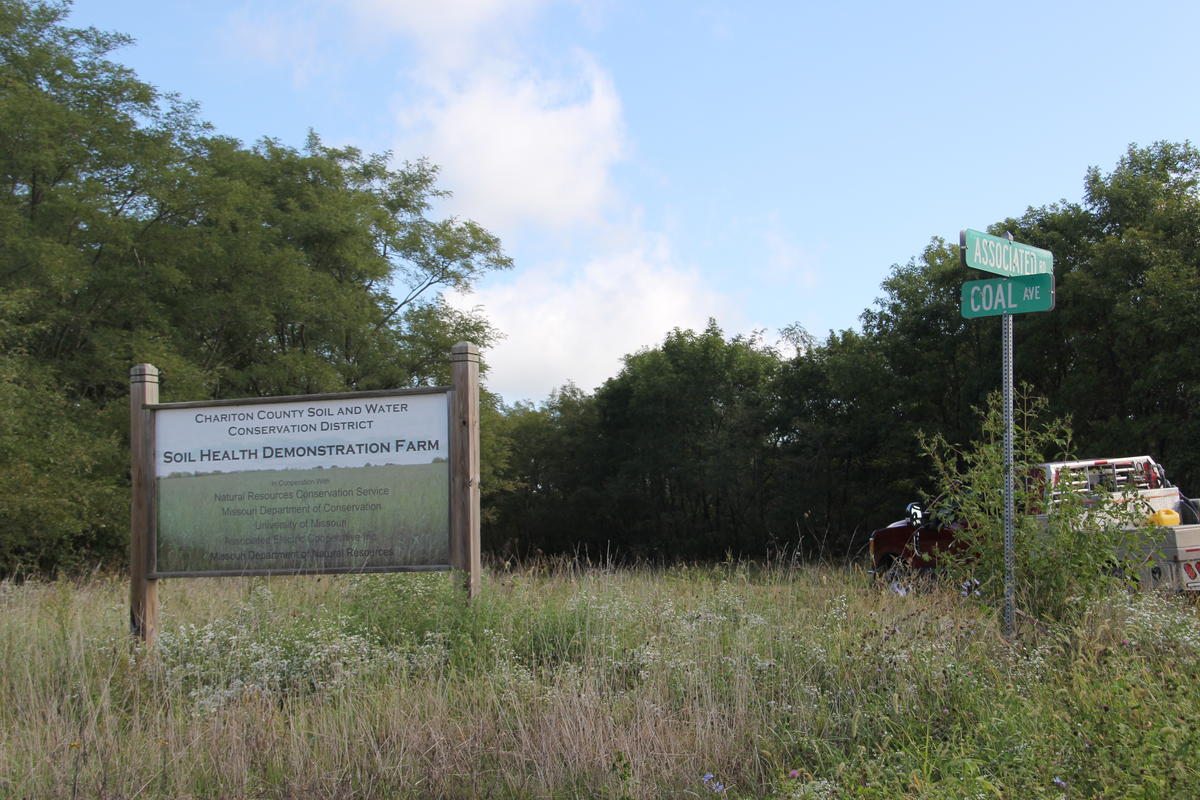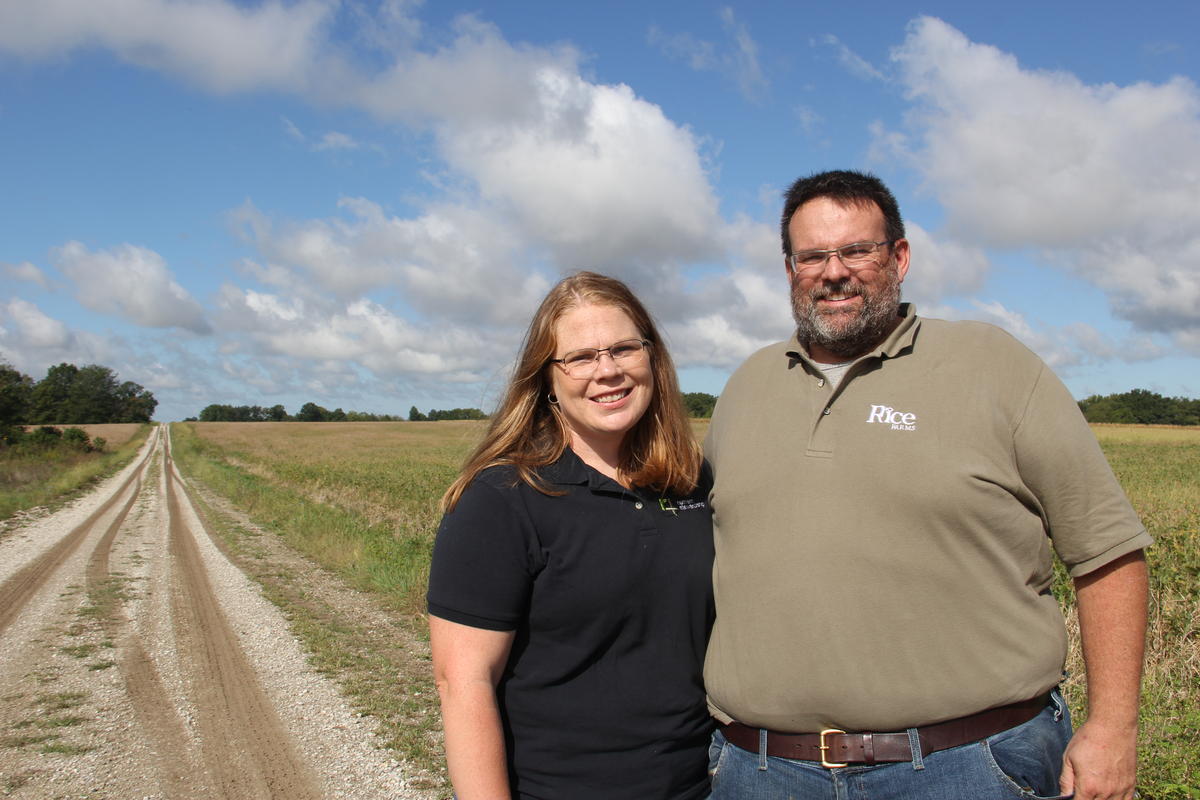Reducing Runoff To Protect The Gulf
4:42 minutes


This segment is part of The State of Science, a series featuring science stories from public radio stations across the United States. This story, by Eli Chen, originally appeared on St. Louis Public Radio.
When corn and soybean farmer Kenny Reichard stopped plowing some of his fields in northern Missouri in 1982, other farmers told him that it was a terrible decision that would lower his yields.
“I’ve been told many times that no-till doesn’t work,” said Reichard, 62, who farms north of Brunswick in Chariton County.
More than three decades later, state programs and agriculture initiatives are trying to encourage farmers to adopt no-till and other practices that reduce fertilizer runoff that contributes to the dead zone in the Gulf of Mexico. While many farmers think such methods are expensive, they’re critical to cleaning up the Mississippi River basin.
“We do realize if we put too much [fertilizer] on, it’s going to go somewhere, and we don’t want to be paying to kill the fish in the Gulf,” said Mitchell Rice, 39, a farmer in Chariton County.
Urban stormwater, sewage and farm runoff that flow downstream from states in the Mississippi River basin have created an area in the Gulf where oxygen is too low to support marine life. Missouri is among the top contributors of nitrogen and phosphorus pollution to the river basin, according to the U.S. Geological Survey. Federal data shows that the state’s pollution largely comes from fertilizer and manure.
Iowa, Minnesota and a few other agricultural states have set goals for the reduction of nitrogen and phosphorus. Missouri has not set targets. The state’s approach to curtailing farm runoff, which environmentalists say lacks strength, is to use sales tax revenue to provide farmers financial incentives to improve crop and livestock practices.
Under the Parks, Soils and Water Sales Tax program, Missouri farmers can apply for funding that would cover up to 75% of the cost of conservation projects. The projects could involve planting cover crops, types of crops that reduce soil erosion, or using vegetation to build buffer zones that block nutrients from waterways.
Last year, the state spent $40 million generated by the sales tax on projects that helped farmers adopt conservation practices. The program has received such a high level of interest from farmers that the state can’t accommodate every funding request, said Chris Wieberg, water protection program director at the Missouri Department of Conservation.
“We would double that conservation if we doubled that money,” Wieberg said.

“The strategy isn’t really tracking what we’re achieving.”
Some environmentalists in Missouri want the state set targets on nitrogen and phosphorus pollution. It isn’t enough to increase acreage of cover crops and fund better agricultural practices, said Maisah Khan, water policy director at the Missouri Coalition for the Environment.
“You can check the box and say we have accomplished x, y and z, but there’s not a lot of data and metrics behind it,” Khan said. “The strategy isn’t really tracking what we’re achieving with this plan.”
Khan has also pressed the Missouri Department of Natural Resources to increase its monitoring of nutrient pollution. The state’s plan to track nitrogen and phosphorus in lakes received approval from the Environmental Protection Agency last year. However, the DNR has no plans to monitor runoff in Missouri’s streams or in the Missouri and Missisippi rivers.
Many farmers in Missouri are opposed to limits on nutrient pollution. Some argue that the approach could be counterintuitive. For example, state regulators might instruct farmers to avoid applying fertilizer during a rain event, which may result in farmers adding more fertilizer before the rain, causing more runoff to occur, said Andrea Rice, director of research and outreach for the Missouri Fertilizer Control Board.
“By putting targets [on nutrients], you’re having to adhere to end goals, whereas here in Missouri, we’re able to focus on the process,” said Rice, who is married to Mitchell Rice.

Rice and her husband farm 1,700 acres of corn and soybean near Clifton Hill, where they plant cover crops and use grid sampling, or precision technology to conserve fertilizer.
Rising fertilizer and seed prices have motivated farmers like him to use these practices, Mitchell Rice said.
“We have to look at the bottom line on everything,” he said. “Cover crops, where we’re having to use less chemical, eventually less fertilizer. It makes sense to be good stewards and do those things.”
Research suggests it could be many years before efforts by farmers and state governments would make much of a difference in the Gulf of Mexico, said Steven Herrington, director of science and impact measures at the Nature Conservancy’s Missouri chapter.
“Let’s say we reduced all of our nitrogen into our soil to zero,” Herrington said. “We still have a legacy of nitrogen in our soils from decades and decades of agriculture that would still be moving down through these systems.”
Missouri DNR officials plan to study the impact of the parks, soils and water sales tax in the coming months.
Invest in quality science journalism by making a donation to Science Friday.
Eli Chen is a science and environment reporter for St. Louis Public Radio and a former contributing producer for Science Friday.
IRA FLATOW: Now, it’s time to check in on the state of science.
ANNOUNCER: This is KERE– for WWNO– St. Louis Public Radio– Iowa Public Radio News.
IRA FLATOW: Local science stories of national significance. The Gulf of Mexico has a dead zone. And I’m not talking about some sort of a Halloween tie-in or an upcoming horror movie. It’s worse than that.
It’s an area in the Gulf that’s been starved of oxygen from the result of too much fertilizer and animal and human waste flowing into the Gulf. That effluent comes upstream, comes from upstream, where the states along the Mississippi River dumped that stuff into the river. And so those states are working to reduce nutrient runoff. Joining me to talk about Missouri’s approach to that problem is Eli Chen, science and environmental reporter at St. Louis Public Radio. Always good to talk with you.
ELI CHEN: Yeah, thanks for having me, Ira.
IRA FLATOW: So I talked about fertilizer runoff. But there are all kinds of runoff. What are we talking about here?
ELI CHEN: Yeah. So what we’re talking about, the dead zone in the Gulf, the majority of runoff that contributes to that is from farms and, to a lesser extent, from stormwater in urban areas and discharges from wastewater treatment plants. And that contains nitrogen and phosphorus, which is good for growing crops. But too much can be a bad thing.
IRA FLATOW: And when the nutrients get to the Gulf, what happens there?
ELI CHEN: Well, actually in any water body, too much nitrogen and phosphorus create these massive algal blooms, these huge growths of algae that are usually green in color. And they’re often described as looking like pea soup or spilled paint on water. And when the bloom dies and the algae rots, that depletes oxygen from the water, creating these dead zones. So it’s a pretty traumatic process.
IRA FLATOW: And this occurs all over. You can see the results. Visually, you can see that.
ELI CHEN: Yeah, yeah. The USGS has some data on this where they’ve measured nitrogen and phosphorus coming from states all around the Mississippi River basin. I will say that, in reporting my story, the most recent data is from 2002. Which is not ideal to work with. But it did show that Missouri is a major contributor to this issue.
IRA FLATOW: You spoke to a farmer about his fertilizer application. And he said it wasn’t just an environmental concern for him, but affected his bottom line.
MITCHELL RICE: We do realize if we put too much on, it’s going to go somewhere. And we don’t want to be paying to kill the fish in the Gulf.
ELI CHEN: Yes. So that’s Mitchell Rice. He’s a farmer in northern Missouri. He’s actually made a lot of efforts to reduce runoff from his fields, like planting cover crops, for example. And those are often cereal crops that reduce soil erosion.
But farmers do have to constantly weigh whether a change to their practices could affect their yields and profits that year. And as Mitchell Rice told me, there are a lot of farmers who are operating in the red lately due to a number of factors. So they need some convincing to do these conservation practices.
IRA FLATOW: Right. And then, like he says, it’s not something they want to do. But they don’t have a choice in this matter.
ELI CHEN: Yeah, that’s correct.
IRA FLATOW: So what is Missouri then trying to do about this? Do they have any incentive or tax programs that they can suggest?
ANNOUNCER: Yeah, so the state’s main strategy is to use this sales tax program that generates funds that are used to help farmers pay for conservation practices. So those are like the cover crops that Mitchell Rice has planted on his farm.
IRA FLATOW: Is this a volunteer thing, or is it a mandatory thing?
ELI CHEN: Yeah, it is voluntary for farmers to use these conservation practices. And environmentalists have complained that Missouri really needs to put limits on nitrogen and phosphorus to really make a difference. And the impact of this sales tax program really hasn’t been measured yet.
IRA FLATOW: Yeah. That’s kind of a thing people want to know about– results and whether these things are working or not. And we don’t have a way yet–
ELI CHEN: That’s correct.
IRA FLATOW: –to judge the effectiveness.
ELI CHEN: Yeah. The state has plans to measure that. But at the moment, we haven’t seen much.
IRA FLATOW: Are there any larger structural issues that could help this problem with how water flows into the Mississippi?
ELI CHEN: Yeah. So in my reporting, I did speak to a nature conservancy scientist who said that restoring wetlands and using nature-based solutions that reconnect the Mississippi River to its floodplain could help prevent runoff. But at the moment that research has yet to translate to any actions that, on a large scale, could help clean up the Mississippi River and the Gulf of Mexico.
IRA FLATOW: Yeah. It’s always, we’ll see what happens, see what happens, see how long this goes.
ELI CHEN: It is a very complicated problem.
IRA FLATOW: It’s an old story. Eli Chen, science and environment reporter at St. Louis Public Radio. Thanks for talking with me today.
ELI CHEN: Thank you, Ira.
Copyright © 2019 Science Friday Initiative. All rights reserved. Science Friday transcripts are produced on a tight deadline by 3Play Media. Fidelity to the original aired/published audio or video file might vary, and text might be updated or amended in the future. For the authoritative record of Science Friday’s programming, please visit the original aired/published recording. For terms of use and more information, visit our policies pages at http://www.sciencefriday.com/about/policies/
As Science Friday’s director and senior producer, Charles Bergquist channels the chaos of a live production studio into something sounding like a radio program. Favorite topics include planetary sciences, chemistry, materials, and shiny things with blinking lights.
Ira Flatow is the founder and host of Science Friday. His green thumb has revived many an office plant at death’s door.